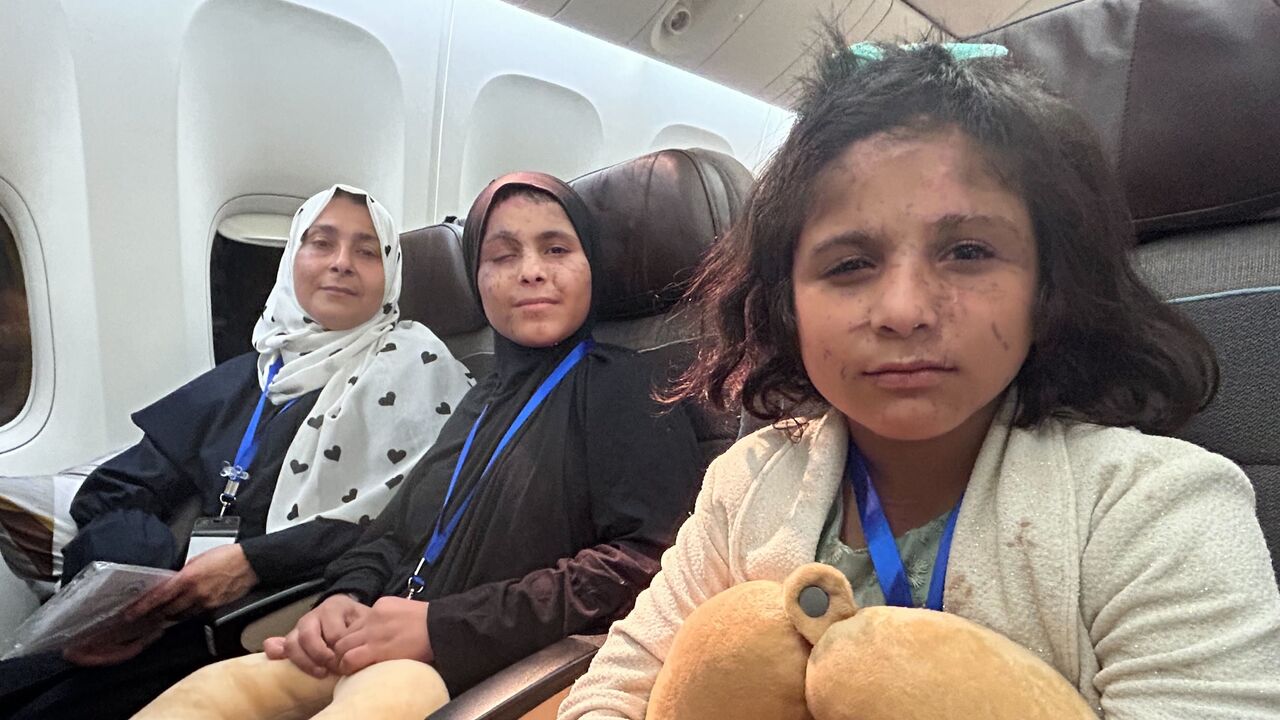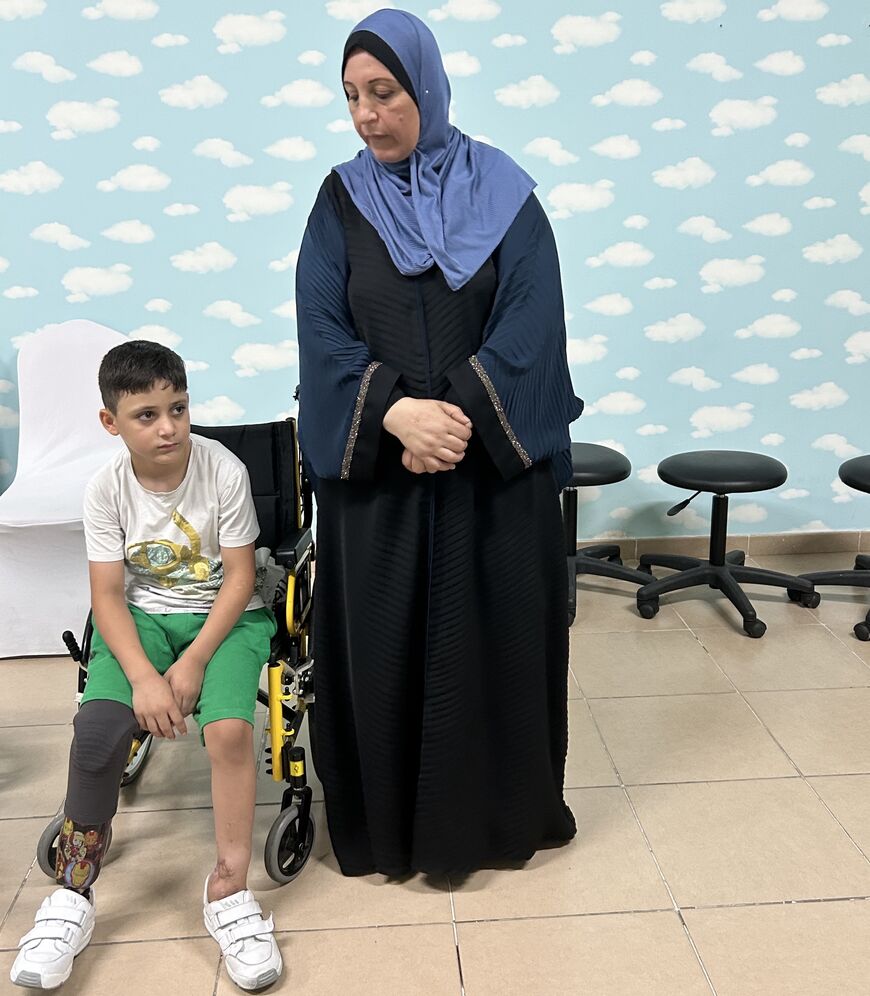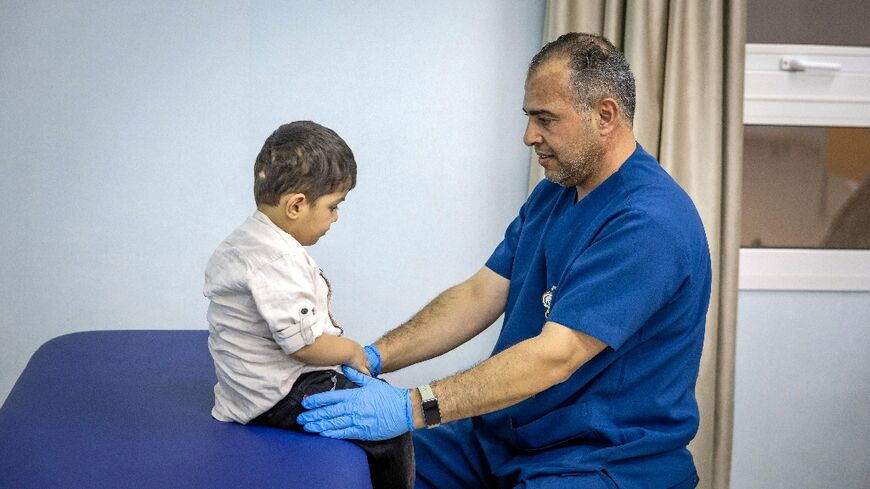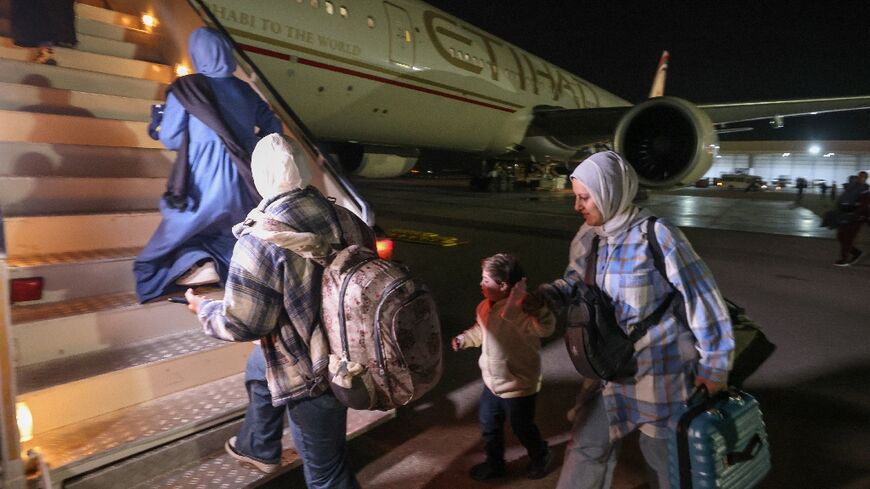UAE evacuates nearly 100 Gaza patients as 10,000+ await transfer
Abu Dhabi has pledged to bring in 1,000 injured children and 1,000 cancer patients from the Gaza Strip to be treated in the its hospitals.

ABU DHABI — The United Arab Emirates, in coordination with the World Health Organization and others, evacuated 252 people from Gaza on the night of Sept. 11, as part of its ongoing efforts to provide humanitarian aid and medical care for those affected by the conflict in the Strip, which is nearing the one-year mark.
Among those rescued were 97 critically wounded people who were accompanied by 155 of their family members. Of the total number, 142 were children.
"When the plane took off, everyone on board clapped," Maha Barakat, a medical doctor and an assistant minister for health and life sciences at the UAE Ministry of Foreign Affairs, recounted.
"That's because no one thought they would actually get the chance to leave until it happened," she told Al-Monitor.
The evacuees boarded the plane from Ramon Airport in the southern Israeli city of Eilat. They made the journey to the Red Sea port city via the Kerem Shalom crossing that links Israel with the Gaza Strip.
This is the UAE's second flight transporting injured persons as well as cancer patients from Israel's southernmost city. The first UAE flight with Gaza children on board landed in February.
Al-Monitor’s Gulf Correspondent, @jcgnana, reports from on the ground in Abu Dhabi as patients are transported to the UAE for treatment. pic.twitter.com/kOXBh2CJZM
— AL-Monitor (@AlMonitor) September 12, 2024
"This is one of the initiatives for the ones who can fly and for the ones who do get approved to get out," Barakat added.
The UAE's evacuation of the wounded and the sick from Gaza is part of a broader plan by the country's president, Sheikh Mohamed bin Zayed Al-Nahyan, to treat 1,000 injured children and 1,000 cancer patients at hospitals in Abu Dhabi.
The World Health Organization said last week that it estimates more than 10,000 Gazans require urgent medical evacuation.
Barakat said the UAE was trying to assist displaced injured and sick individuals who could not make it to the Egyptian border following the closure of the Rafah border crossing in May.
Maysa, 15, and Yara, 10, were on the flight. Their father, who accompanied them, said the children had lost their eyesight in Khan Younis in the southern Gaza Strip due to Israeli bombardment.
"They were in a school when they were hit along with four other kids in the family," he said, holding up a picture of their brother, who had a visible head injury and did not get approval to leave Gaza.
Humanitarian city
Many of the injured were taken immediately to various hospitals in Abu Dhabi, while the rest were transferred to the Emirates Humanitarian City located in the industrial area of Musaffah.
Al-Monitor was given a tour of the city, which has the capacity to host up to 15,000 people. It currently hosts 1,700, including some of the 252 that arrived from southern Israel on Thursday.
Survivors first began arriving from Gaza via Egypt's El Arish starting in November 2023, a month after the Oct. 7 attacks on Israel by Hamas that left around 1,200 Israeli civilians dead. Israel's offensive against the enclave has since killed more than 41,000 Palestinians and injured more than 90,000, according to local health authorities.
For those being hosted in the city, there are schools, rehab centers and hospitals to provide care.
Muatassim, a 6-year-old from Gaza City, spoke to Al-Monitor from his classroom in Humanitarian City.
He showed us his leg that was injured in an Israeli attack. He doesn't remember the details and didn’t want to talk about his sister who is back in Gaza.
The Emirates Humanitarian City, which was built to host refugees, now exclusively hosts those evacuated from Gaza.
The survivors get three meals a day and can purchase clothes and medicines they need from stores and pharmacies located within the city, a UAE official told Al-Monitor.
The budget to run the entire program comes from different entities, such as the Ministry of Education and the Red Crescent, which replenish supplies in stores, as well as others, the official said.
"For instance, the flight on Thursday was [provided] by the Ministry of Foreign Affairs and Etihad Airways. There are different contributors," he added.
Those in need of more care are sent to hospitals within the health care network in Abu Dhabi.
The students also attend music classes and participate in theatrical performances.
The instructors in the classroom are recruited through Abu Dhabi's Ministry of Education network.
"They are of different nationalities," Mubarak Falah al-Qahtani, the official spokesman of the Emirates Humanitarian City, explained.
"It is difficult to deal with special cases. They've been through trauma. In the UAE, people are being taken care of with determination, and they know how to take care of special students," he told Al-Monitor.
Long road to recovery
One resident of the city, 11-year-old Mohammed from southern Gaza's Rafah, has burn injuries from an attack. His burns have largely healed. Al-Monitor met him while he was visiting Amro Ibrahim, an in-house clinical psychologist, for therapy.
Ibrahim sits him down and helps him solve puzzles. Mohammed doesn't talk much, but Ibrahim explains that children who are recovering from trauma at the Humanitarian City express themselves through art and music.
As we tour the facilities, we see paintings reflecting the children's many memories of Gaza. In an empty classroom are pictures of destroyed buildings, with a rendering of a woman in a green hijab with wings hovering over the debris. An image of Al-Aqsa Mosque sits against the backdrop of what looks like starry skies inspired by Van Gogh. There are also drawings of various Emirati officials, including Qahtani, whom the children meet on a daily basis.
During a tour of the prosthetics-fitting section, Al-Monitor met 8-year-old Siraj, who uses a wheelchair.
From Zeitoun in southern Gaza, he is accompanied by his grandmother and stands up to show his prosthetic leg.
Qahtani explains that Siraj was injured in a missile attack at his uncle's house that killed his parents, sisters, grandfather and aunt.
"Four of his brothers are here," he told Al-Monitor.
Amer Sprzo, a prosthetics specialist from the German company Orthopedic Technics Berlin, explains that the children need to be fitted with new prosthetics every six months. "They grow up fast."
Reem Hammouda, a 30-year-old woman from the Jabali refugee camp, arrived to have her prosthetic leg checked and said that it is uncomfortable.
Hammouda was accompanied by her mother-in-law. Her brother, husband, three of her sisters’ children and her father were killed in an attack that also killed some of her neighbors.
"I was eight months pregnant when the attack took place. Three days after the attack, the baby didn't make it," Hammouda told Al-Monitor.
Her mother-in-law wept in the background.
When asked about her future after she leaves the Emirates Humanitarian City and at the end of the war, she said she hopes to be with one of her children, a son who was left behind in Gaza. "I try and speak to him every day if possible. I worry whenever I cannot get hold of him.”
Correction: Sept. 17, 2024. An earlier version of this article referred to a UAE Ministry of Foreign Affairs spokesperson, rather the comments were attributable to a UAE official.











